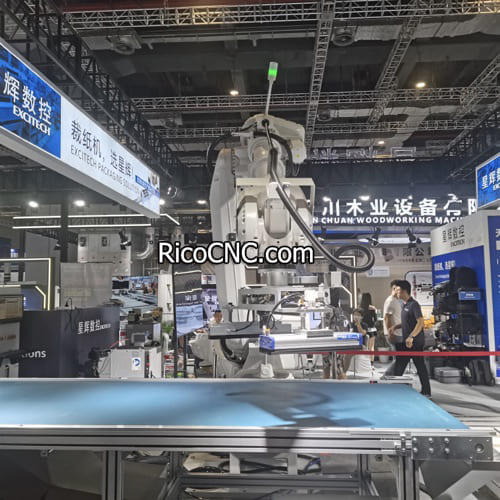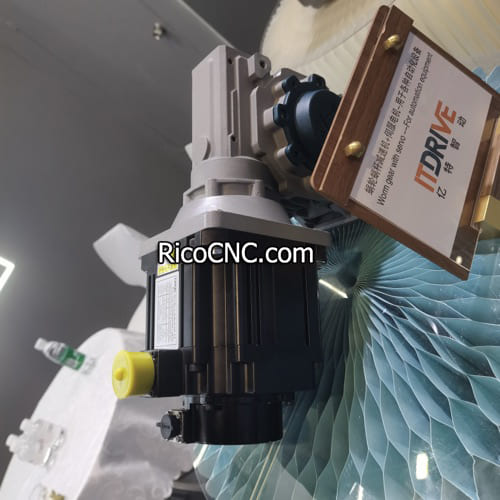
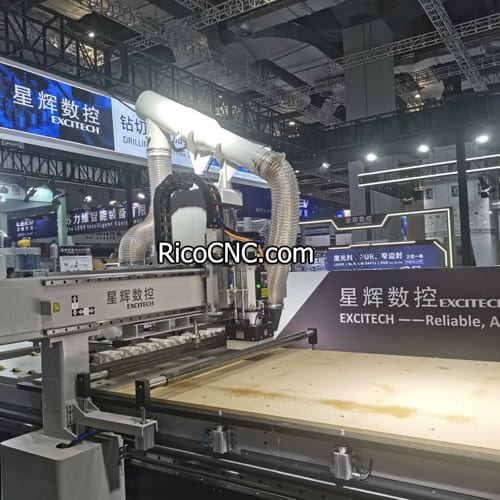
What is the Difference Between the AC Servo Motor and Two-Phase Induction Motor?
Introduction
In the realm of automation, different types of motors have distinct advantages and functionalities. The AC servo motor and two-phase induction motor are two popular types of motors used in various industrial applications. Understanding their differences is crucial in choosing the right motor for a specific application, whether it is high-precision control or heavy-duty performance. This article will explore in depth the features, working principles, advantages, and specific applications of both AC servo motors and two-phase induction motors, helping you make an informed decision for your automation needs.
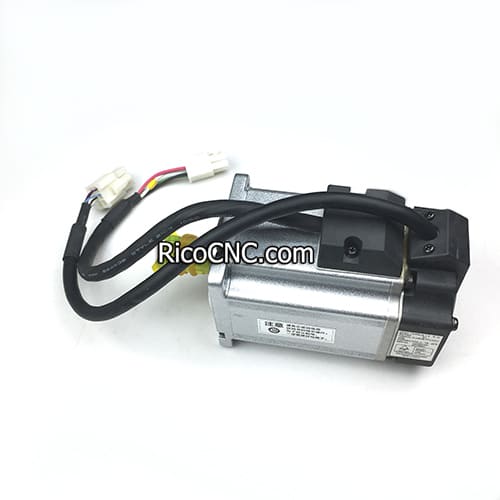
1. Basic Concepts of AC Servo Motors
An AC servo motor is a rotary actuator designed for precise control of angular or linear position, velocity, and acceleration. It typically consists of a motor coupled with a sensor that provides feedback to maintain precise control over its position and speed.
Working Principle: The AC servo motor uses alternating current (AC) to generate rotational movement. Its built-in encoder sends feedback to the controller, ensuring that the motor reaches the intended position with precision. This feedback loop forms a closed-loop system, making servo motors highly suitable for applications demanding precise movement.
- Components: An AC servo motor typically contains a rotor, stator, encoder, and a servo controller. These components work together to provide accurate torque and motion control.
Applications:
Robotics: Used for precise joint movement
- CNC machinery: Drives spindle movement with high precision
- Automation systems: Provides efficient control in pick-and-place machines
For more details on various AC servo motor options, check out the Schneider Electric AC Servo Motor.
2. Basic Concepts of Two-Phase Induction Motors
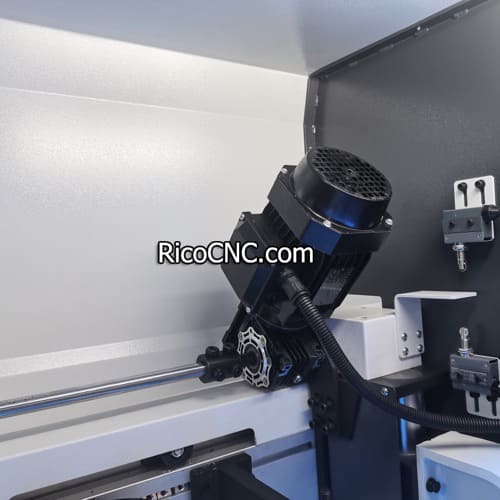
The two-phase induction motor is a type of AC motor that runs on two different phases of alternating current. It is known for its robust construction and ability to operate effectively in a variety of industrial applications.
Working Principle: The motor works by using a magnetic field generated by the two-phase power supply to induce current in the rotor. The interaction between the induced currents and the magnetic field creates a torque, causing the rotor to rotate. Unlike servo motors, there is no feedback mechanism, making it an open-loop system.
- Components: The primary components include a stator, which generates a rotating magnetic field, and a rotor, which is the part that turns due to the induced current.
Applications:
Industrial fans and blowers
- Compressors
- Conveyor systems where high torque and durability are more important than precise control
3. Control Mechanisms
One of the primary differences between an AC servo motor and a two-phase induction motor lies in their control mechanisms.
AC Servo Motor: Utilizes closed-loop control. The feedback provided by the encoder ensures precise adjustments to the rotor’s position, speed, and torque. This allows for highly accurate, synchronized movement, especially useful in applications that demand exact positioning.
- Two-Phase Induction Motor: Operates on an open-loop control mechanism, meaning there is no feedback involved in adjusting the rotor's speed or position. This results in less precise movement but provides simplicity and robustness, which is often beneficial in applications that require high durability.
Comparison Table:
Parameter AC Servo Motor Two-Phase Induction Motor Control Type Closed-loop with feedback (encoder) Open-loop, no feedback Precision High precision Lower precision Application Requirement High control, robotics, CNC General industrial applications Efficiency Higher due to precise control Moderate
4. Torque and Speed Characteristics
Torque and speed are critical characteristics that define motor performance.
AC Servo Motors: Offer high torque at low speeds and maintain consistency across different loads, which is critical in robotic arms or CNC operations where precision and speed are paramount.
- Two-Phase Induction Motors: Provide high starting torque but have a less consistent torque-speed curve, especially under varying loads. This makes them suitable for applications where the motor needs to start under heavy load conditions, like in conveyors and fans.
Example: The Fuji Electric GYB Servo Motor offers consistent torque and is ideal for precise applications.
5. Efficiency and Power Consumption

AC Servo Motor: Generally, servo motors are more energy-efficient because their precise control minimizes waste and reduces unnecessary power usage. The ability to closely manage speed and torque leads to reduced power consumption in many applications.
- Two-Phase Induction Motor: Has a simple construction and is generally less efficient compared to servo motors, mainly because they operate on an open-loop basis, which does not offer the same optimization in power usage.
Energy Efficiency Tip: Choosing the right motor type for your application can lead to significant power savings, especially in long-running industrial operations.
6. Motor Positioning and Feedback System
AC Servo Motors: Equipped with encoders, AC servo motors offer precise control over their positioning. This capability makes them perfect for applications such as industrial robotics, where even a small deviation in movement could lead to errors.
- Two-Phase Induction Motors: Lack a position feedback system, meaning they cannot provide the same level of precision. They are more suited for applications where the position or speed control isn't as critical, such as in continuous-flow industrial processes.
Consideration: If your project requires exact positioning, the AC servo motor is typically the better option. For a practical example, refer to the Yaskawa AC Rotary Servo Motors.
7. Cost Comparison
AC Servo Motors: These are more expensive due to the complexity involved in their construction and the need for an encoder and a closed-loop control system. The added cost, however, is justified by the precision and control offered.
- Two-Phase Induction Motors: Are generally more cost-effective due to their simpler design and open-loop control. They are widely used in applications where cost is a significant concern, and precision is less critical.
Comparison Tip: Assess your need for precision versus cost to make the right decision.
8. Reliability and Maintenance
AC Servo Motors: Require periodic maintenance, especially due to their encoders and controllers, which are more sensitive compared to standard induction motors. Nevertheless, their operational precision makes them invaluable for specific tasks.
- Two-Phase Induction Motors: Offer robust and low-maintenance operation, as they have fewer components that require precise calibration. This makes them ideal for environments that demand rugged performance.
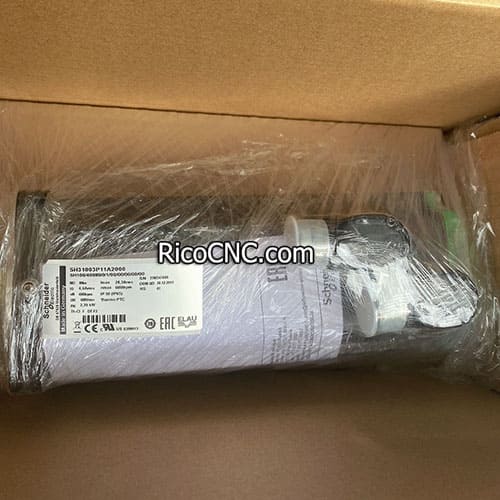
9. Applications Where Each Motor Excels
AC Servo Motors: Excel in applications requiring high precision, such as robotic arms, CNC machinery, and automated manufacturing systems where accuracy is non-negotiable.
- Two-Phase Induction Motors: Best suited for applications where torque is needed more than precision. This includes industrial fans, conveyors, and compressors where reliability and cost are prioritized over precise control.
Learn More: Check out the Panasonic AC Servo Motors for CNC applications.
10. Summary and Recommendations
Both AC servo motors and two-phase induction motors have their unique advantages. The AC servo motor offers high precision and is suitable for applications requiring detailed positioning and speed control. It is the choice for high-performance needs in automation and robotics. Meanwhile, the two-phase induction motor is reliable, easy to maintain, and cost-effective, making it ideal for rugged industrial environments with less need for precise control.
When choosing a motor for your system, consider factors like control, torque, efficiency, and cost. If precision is key, go for an AC servo motor. For more general industrial uses, especially where robustness and cost are paramount, the two-phase induction motor will serve well.
FAQs
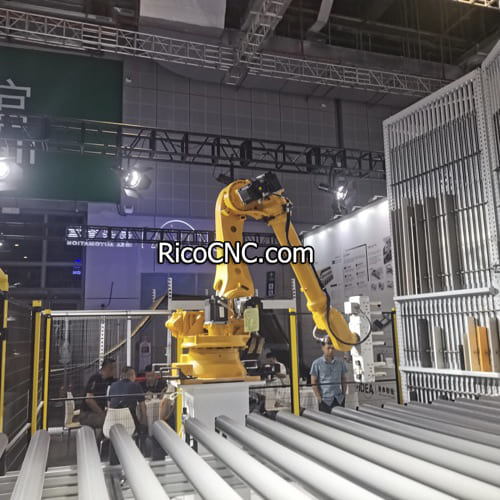
1. What is the primary difference between an AC servo motor and a two-phase induction motor?
The primary difference lies in their control mechanisms: AC servo motors use closed-loop control with feedback, whereas two-phase induction motors operate on an open-loop system.
2. Which motor is better for high-precision applications?
AC servo motors are better suited for high-precision applications due to their feedback system and high accuracy in position control.
3. Are AC servo motors more energy-efficient than induction motors?
Yes, AC servo motors are typically more energy-efficient due to their precise control over speed and torque, minimizing unnecessary power usage.
4. In which applications are two-phase induction motors preferred?
Two-phase induction motors are preferred in applications like industrial fans, blowers, and conveyors, where durability and simplicity are more critical than precise control.
5. How do AC servo motors maintain precise control?
AC servo motors maintain precise control through the use of an encoder, which provides feedback to adjust the motor’s position and speed as required.
Conclusion
Understanding the difference between AC servo motors and two-phase induction motors is essential for selecting the right motor for your application. If you need precision, efficiency, and high control, an AC servo motor is the best choice. On the other hand, for general industrial operations where cost-effectiveness and rugged reliability are key, a two-phase induction motor will suffice. Ultimately, the right motor will depend on your specific requirements in terms of control, cost, and application.
For more detailed motor options and their applications, consider visiting the Qinggong Group product page and explore their wide range of motors and automation solutions.
